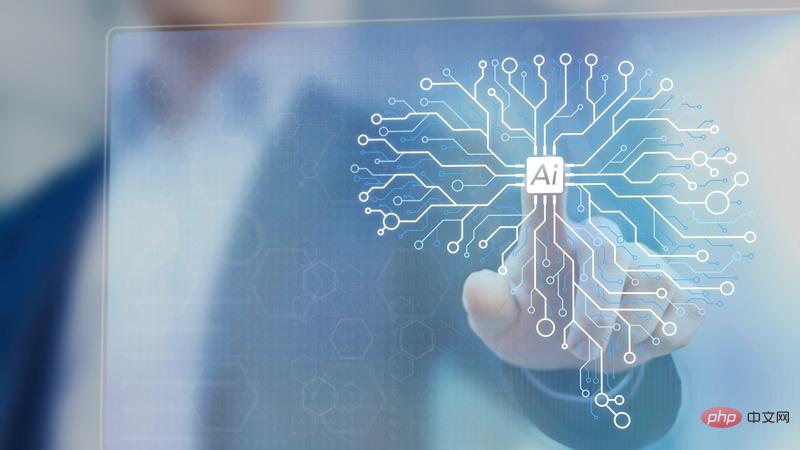Home >Technology peripherals >AI >The seven most common ChatGPT questions and answers
The seven most common ChatGPT questions and answers
- WBOYWBOYWBOYWBOYWBOYWBOYWBOYWBOYWBOYWBOYWBOYWBOYWBforward
- 2023-04-22 13:01:074586browse

After the craze for ChatGPT and other conversational AI applications, some people still have many questions about them, such as what exactly generative AI is. what and what it can do for people and businesses and more. Industry experts answer some of the most common questions asked by Gartner customers and suppliers.
1. What role will ChatGPT play in the enterprise?
ChatGPT and other similar basic models are one of many hyperautomation and artificial intelligence innovations. It will form part of architectural solutions that provide automation, augment human or machine capabilities, and execute business and IT processes autonomously. It may also be used to replace, recalibrate and redefine some of the activities and tasks included in various jobs.
2. What are the different ways to use ChatGPT?
ChatGPT can:
·Generate and help improve prose and code development.
·Summary text.
·Category content.
·answer the questions.
·Translate and convert languages (including programming languages)
In addition, there are four main ways to deploy ChatGPT technology, two of which are currently feasible:
·Enter prompts and receive results through a web-based interface, which is currently the most popular method.
·Prompt engineering without API: Prompt engineering refers to using services such as ChatGPT in conjunction with other technologies as part of the workflow. Users can create this workflow manually or using screen scraping and robotic process automation (RPA) technology.
· Rapid engineering using API: This model is not yet available but is expected to debut in the middle of this year. While users may find solutions that support API wrappers around ChatGPT, they are not recommended for product builds or extensions, and they are not supported by OpenAI, the company that created ChatGPT.
Custom builds: Custom builds of core GPT2/GPT3 or other base models can be created for custom implementations, but users will lose the filtering of conversational interactions or prompts provided by ChatGPT.
3. What is the impact of ChatGPT on the workforce?
It’s hard to say. New jobs will be created and others redefined. Changes in the size of the workforce will vary significantly based on industry, location, business size and products offered, etc. What is clear, however, is that the use of tools such as ChatGPT, hyperautomation and other AI innovations will focus on repetitive and high-volume tasks, with a focus on increasing efficiency, increasing productivity and improving quality control.
4. What are the current limitations of ChatGPT?
·ChatGPT only accepts data training before 2021, so it lacks information about recent developments.
·ChatGPT cannot cite its sources, it is only as reliable as those sources, which may be erroneous and inconsistent, both in themselves and in how ChatGPT combines them.
·It cannot generate images (although in the future, it can be used in conjunction with vision-generative AI models).
·No supported API is currently available.
·Users cannot train ChatGPT on their own knowledge base.
·Although it gives the illusion of performing complex tasks, it does not understand the basic concepts, it only makes predictions.
·It does not provide data privacy guarantees.
5. How safe is it for employees to use ChatGPT?
Experts recommend that anyone not post personally identifiable, company or customer information that is not generally available to the public because there is currently no Explicit guarantees of privacy or confidentiality. Instruct all employees using ChatGPT to treat the information they share as if it were posted on a public website or social platform. Additionally, it is important to note that any information released may be used to further train the model.
Nonetheless, it is recommended to develop enterprise policies around ChatGPT rather than blocking ChatGPT. Some employees of the enterprise may already be using it, and banning it completely may lead to "shadow" ChatGPT use and only provide the enterprise with a false sense of compliance. Therefore, a smart approach is to monitor usage and encourage innovation, but ensure that technology is only used to enhance internal work and use appropriately qualified data, rather than in an unfiltered way with customers and partners.
6. What’s next for ChatGPT and generative artificial intelligence more broadly?
Microsoft announced the introduction of the Azure OpenAI service in mid-January, and in the ChatGPT was introduced in the first quarter. The Azure version promises significant enterprise operational capabilities, and details including pricing and packaging are still emerging. It may add APIs and provide greater privacy and security.
7. What actions are recommended for people to take?
·Continue to use it, but don’t overdo it. People need to realize that this is a very early stage for ChatGPT applications and most of the news heard now is hype, but the potential of ChatGPT applications is huge.
·Explore other emerging generative AI use cases. Beyond GPT language.
·Encourage experimentation. Encourage out-of-the-box thinking about workflows, ensure an understanding of risks, issues, and best practices, and subject all generated text to human review.
·Create a task force reporting to the CIO and CEO. Explore existing threats and key opportunities, plan a roadmap for discovery, and determine the scope of skills, services, and investments required.
The above is the detailed content of The seven most common ChatGPT questions and answers. For more information, please follow other related articles on the PHP Chinese website!
Related articles
See more- Technology trends to watch in 2023
- How Artificial Intelligence is Bringing New Everyday Work to Data Center Teams
- Can artificial intelligence or automation solve the problem of low energy efficiency in buildings?
- OpenAI co-founder interviewed by Huang Renxun: GPT-4's reasoning capabilities have not yet reached expectations
- Microsoft's Bing surpasses Google in search traffic thanks to OpenAI technology

